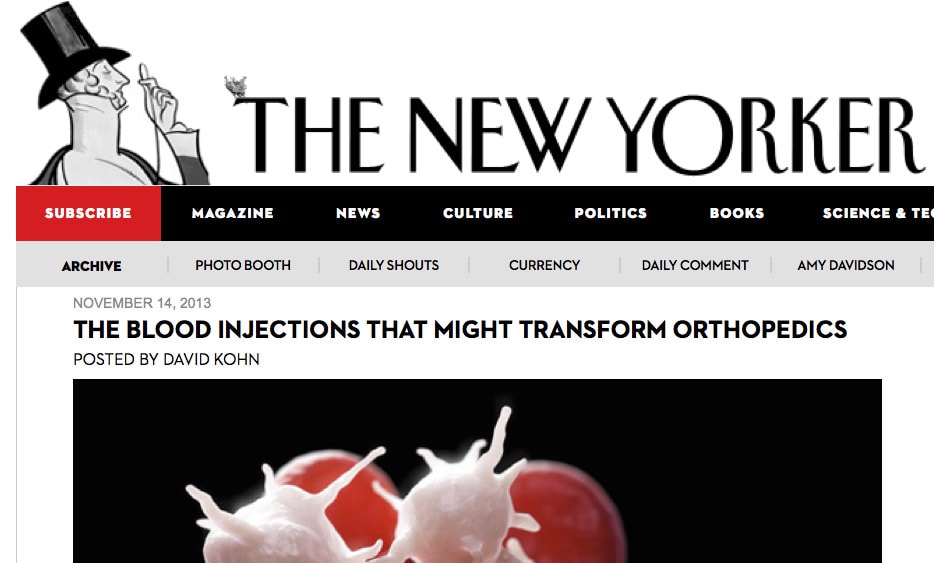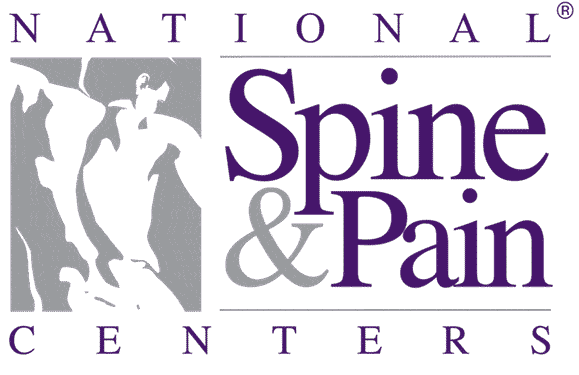
Jan 21, 2014 | Elbow, Hip, Knee, News and Events, Shoulder / Rotator Cuff, Stem Cell Procedures
As Regenexx Network Physicians, we’re part of the only stem cell treatment network to publish this type of analysis of patient outcome data. The analysis is made possible thanks to the massive numbers that have been accumulating for years in the Regenexx patient registry.
This patient outcome data is not part of a controlled trial. Every patient becomes part of a registry to track outcomes and any complications. This data is a compilation of patient input to the Regenexx Patient Registry at regular intervals following their Regenexx Procedure.

Jan 2, 2014 | Prolotherapy, PRP, Shoulder / Rotator Cuff, Stem Cell Procedures

Stem cell and platelet procedures can be used to help heal rotator cuff injuries and degenerative shoulder conditions
Recent Studies cited by the American Academy of Orthopaedic Surgeons show the potential benefits of regenerative treatments such as Stem Cell therapy and Platelet Rich Plasma (PRP) [1]. Also, a recent case history cited a patient with a severely debilitating rotator cuff injury—a case where the patient was going to lose her job due to the injury—experiencing a 90% improvement in rotator cuff pain, function and mobility after approximately 7 months of treatment[2]. While this example may be above normal expected results, it is indicative of just how far these treatments have come in healing this type of injury.
Surgery is a common treatment option following a rotator cuff injury. But according to the American Academy of Orthopaedic Surgeons, possible complications of surgery include nerve injury, infection, deltoid detachment, permanent stiffness or loss of motion and a re-tear of the tendon.[3] The advantage of regenerative treatment is that they are minimally invasive compared to surgery, and they have the ability to actually heal the injury without scalpels, and the physical stitching together of tendons and tissue.
[accordion title=”Most Commonly Treated Shoulder Conditions:” is_open=”no”]
Below is a list of the most common shoulder and rotator cuff injuries and conditions that we treat with stem cells or platelet procedures. This is not an all-inclusive list.
- Rotator cuff tears
- AC Joint Separation
- Arthritis of the shoulder joint
- Labral tears or degeneration
- Thoracic outlet syndrome
- Rotator cuff tendonitis
- Recurrent shoulder dislocations
[/accordion]
To maximize healing, Stem Cell treatments are used with other leading treatments in the field including Prolotherapy, Platelet Rich Plasma (PRP) and Platelet Lysate therapy. In certain cases, a patient’s unique medical condition or circumstance may preclude utilizing the benefits of all treatments used together. In this case, a customized plan is developed using one or more of the treatments to obtain the best patient outcomes possible. While sometimes there is no good alternative to surgical repair, most often biologic repair offers a better option.
Video: Treating the Shoulder and Rotator Cuff Non-Surgically with Regenerative Biologic Treatments:
[youtube id=”lLGP74H7EHc” width=”600″ height=”350″]
Stem Cell Therapy: The Process
Stem Cell therapy makes use of the supply of stem cells available in the body to help repair injured and degenerated tissues. The easiest place to harvest these stem cells is from the back of the hip area, under ultrasound or x-ray guidance. This harvesting procedure is well tolerated by patients and not considered difficult as many patients claim it is not painful.
After bone marrow blood is drawn, it is centrifuged to concentrate and purify the stem cells, with each stem cell specimen custom designed to meet the needs of the specific injury. Utilizing either fluoroscopy or ultrasound, the stem cells are placed on the injured site precisely to improve the likelihood that stem cells will adhere to the damaged area and promote healing. After the stem cells are placed, concentrated platelets and other adjuvants are injected to stimulate the stem cells to multiply, and then transform into the repair cells needed to regenerate new tendon. The platelets are injected again 2-5 days later to keep the stem cells activated and promote additional healing.
Prolotherapy
Injected 2-5 days before the stem cells, Prolotherapy contains a solution of concentrated dextrose and local anesthetic (steroids are not used). This solution stimulates the body’s natural ability to repair damaged tissue, encouraging new growth and creating a positive environment into which the stem cells are placed.
Platelet Rich Plasma
Platelets initiate tissue repair by releasing growth factors. These growth factors start the healing process by attracting cells that repair us including critical stem cells. Platelet Rich Plasma therapy intensifies this process by delivering a higher concentration of platelets. The therapy involves a small sample of the patient’s blood placed in a centrifuge to separate the platelets from the other blood components. The concentrated PRP is then injected into and around the point of injury, significantly strengthening the body’s natural healing. Our process for PRP is much different and sets us apart. Because our samples are all hand processed, we are able to produce PRP that is free of contaminating red and white cells, which can inhibit repair. This same special process also allows us to customize the concentration and volume for each individual and each injury type. This greatly improves outcomes.
Platelet Lysates
Platelets in the blood release powerful tissue growth factors that aid in the healing process. Normally this occurs slowly over time, but through the creation of a Platelet Lysate solution, a high concentration of growth factors can be released immediately into the body. The result is a targeted, faster healing process. Additionally, there are areas of the body where using traditional PRP may cause too much inflammation. Platelet Lysates are a better option where inflammation may become an issue.
Regenerative Treatments Deliver Solid Results
In the case history mentioned above, the patient previously tried cortisone injections, acupuncture, physical therapy and taking 2400mg of Ibuprofen daily. The result was that her pain consistently intensified. After losing range of motion in her shoulder, she developed pain and muscle spasms in her neck. She felt that she was unable to continue her career or participate in sports. After receiving regenerative care, she experienced 60-70% improvement in overall pain function and mobility after just 5 months. Two months later, this number jumped to 90%[4]. Regenerative biologic treatment is a real solution to negate the effects of a rotator cuff injury without the risks associated with more invasive surgical procedures, and can finally bring relief to a patient where other treatments have failed.
[1] T. Sean Lynch, MD, “The Role of Biologics in Rotator Cuff Repairs,” AAOSNow; August 2013; Volume 7, Number 8; American Academy of Orthopaedic Surgeons (AAOS); http://www.aaos.org/news/aaosnow/nov11/clinical3.asp
[1] Donna D. Alderman, DO, Sean C. Robbins, BA, “Platelet Rich Plasma Prolotherapy for Rotator Cuff Tears,” Practical Pain Management, September 2012; 21-23
[1] “Rotator Cuff Tears: Surgical Treatment Options,” OrthoInfo; American Academy of Orthopaedic Surgeons (AAOS); http://orthoinfo.aaos.org/topic.cfm?topic=A00406
[1] Donna D. Alderman, DO, Sean C. Robbins, BA, “Platelet Rich Plasma Prolotherapy for Rotator Cuff Tears,” Practical Pain Management, September 2012; 21-23

Dec 5, 2013 | Blog, PRP, Shoulder / Rotator Cuff
An excellent article was posted this month at The New Yorker’s online hub – newyorker.com
The article looks at PRP treatments, with the story of Chris Waddell, an athlete who was paralyzed in a college skiing accident, but went on to accomplish amazing athletic achievements including five gold medals in the Paralympic Games. After experiencing a rotator cuff tear and torn biceps tendon, he tried rehab, exercises and cortisone shots with limited success. Facing surgery, he decided to try PRP. His return to health has been remarkable.
Read the Story Here
StemCell ARTs offers the nations most advanced Stem Cell and PRP procedures. Learn more about how our PRP is different here.
Apr 1, 2013 | PRP, Research, Shoulder / Rotator Cuff
Platelet Rich Plasma Prolotherapy For Rotator Cuff Tears
Physicians should consider platelet rich plasma prolotherapy for patients with tendinopathies or rotator cuff tears before any surgical interventions.
History: A 40 year old woman presents with a 3 year history of right shoulder pain which began during a kickboxing workout. She pushed past the pain on three subsequent workouts until she could no longer lift her arm or continue her work as a hairdresser.
Read the full article…



